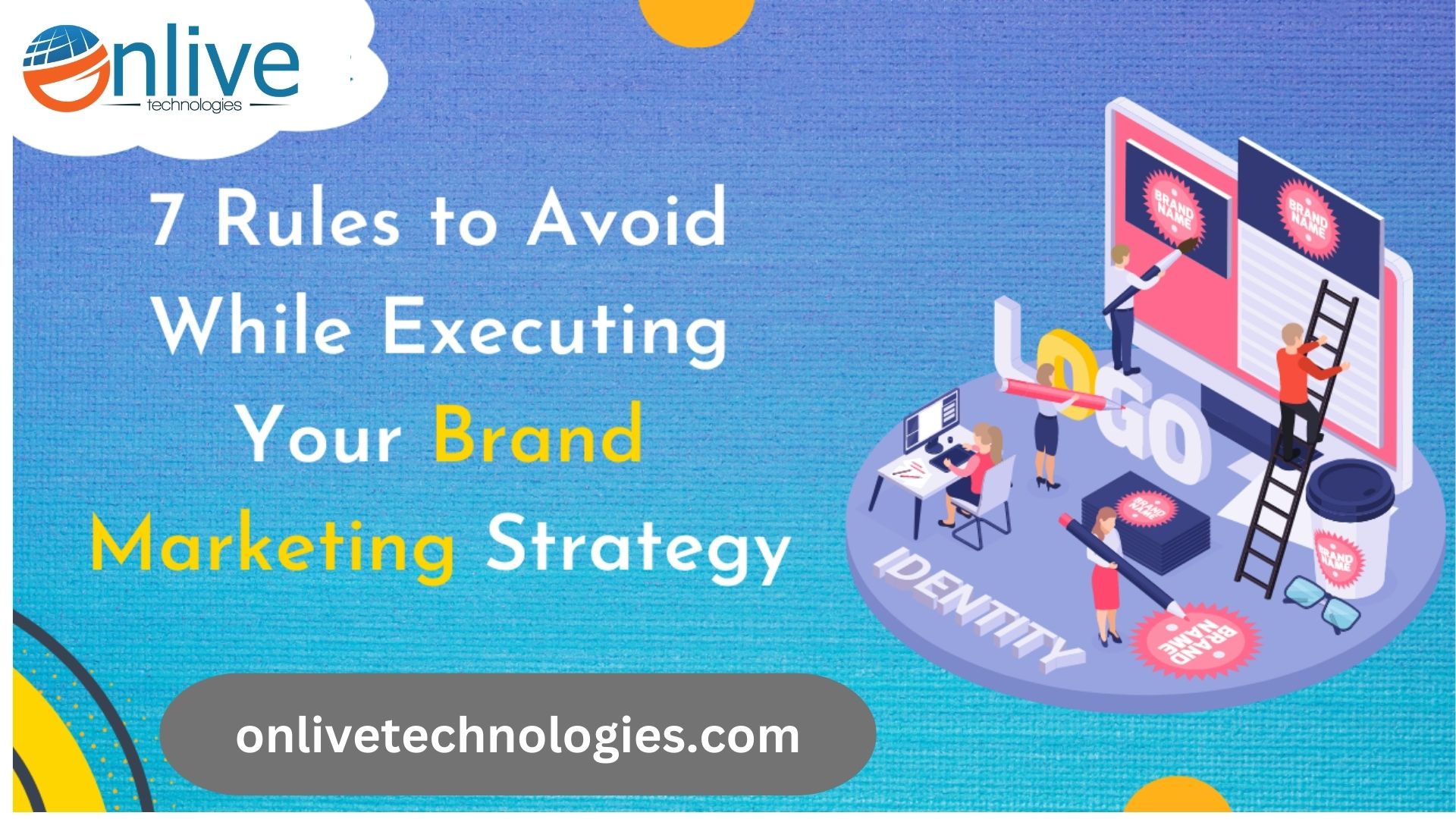Introduction
In a world where brands are at the heart of consumer choice, the right marketing strategy can be the dividing line between success and obscurity.The even the most creative strategies can falter if they run afoul of certain cardinal sins. Its before you set your marketing gears in motion, let’s dissect seven crucial rules to avoid when executing your brand marketing strategy. This discussion won’t be filled with industry jargon or complex terms – rather, it’ll be a down-to-earth chat over a virtual cup of coffee.
Ignoring the Customer’s Perspective
Remember when you were little, and you used to play pretend? You’d step into the shoes of a superhero, an astronaut, or a firefighter. The essence of a successful marketing strategy lies in playing pretend too, but this time, you’re stepping into the shoes of your customers.
Avoid the mistake of being too wrapped up in your brand and products that you forget to see things from the consumer’s perspective. Empathize with them. What are their pain points? Their desires? How does your brand fit into their narrative?
Neglecting Consistency
- A McDonald’s advertising can be recognised from a mile away for a reason. The same logic underlies the capacity to sing along to Coca-Cola commercial jingles. Consistency is a potent tool that brands may use to cement their identity in the minds of consumers.
- Avoid the error of using inconsistent messaging and imagery. Whether you’re communicating with your audience through your website, social media, email newsletters, or offline advertising, you want them to recognise you right away. To make your brand distinctive, use consistent colours, typefaces, imagery, and voice throughout all of your advertising pieces.Overlooking the Power of Storytelling
Many brands overlook the power of storytelling, focusing instead on features and specifications. While features are important, they don’t inspire emotion and connection the way stories do. Avoid this pitfall by weaving compelling narratives around your brand and products. Tell the story of your brand’s origin. The challenges you’ve overcome, and the difference your products have made in people’s lives.
Neglecting Social Media Engagement
Social media is the town square of the digital age, a bustling gathering place where your customers discuss their needs. Brands often mistake social media as just a broadcasting platform to disseminate information. They overlook its potential for building relationships, sparking conversations, and creating brand advocates.
- Stay away from the trap of only using social media as a one-way communication channel .The
- Keep in mind that social media is more like a telephone than a loudhailer. Keep the dialogue continuing.
Final Words
Crafting a winning brand marketing strategy can feel like navigating a labyrinth. This doesn’t have to be a daunting task. By avoiding the seven cardinal sins discussed above, you can steer clear of common pitfalls and set your brand on the path to success.
Your brand is more than a logo or a tagline; it’s a promise, an experience, and a relationship with your customers. It’s your story waiting to be told, and your customers are eager listeners. So, make sure to tell it well.
Keep your target market in mind, offer them with a service they can’t get anywhere else, be faithful to the essence of your brand, and develop captivating narratives. Be flexible, accept data, and interact with your audience on social media. If you follow these rules, you’ll not only start a name for oneself but also leave an indelible mark.
Conclusion
Your brand marketing strategy‘s primary goal is to create a powerful, recognised presence in the minds of those you want to reach. Your brand ought to possess a strong value proposition, a recognisable belonging, and an engaging narrative to achieve this. The path towards accomplishing this goal is not without challenges. Any of the seven deadly sins listed above could derail your brand marketing plan and hinder your growth.
To recap, avoid being self-focused and make sure to always see your brand from your customers’ perspective. Define your unique value proposition and consistently communicate it across all channels. Its Leverage the power of storytelling to connect with your audience on an emotional level, and make data the cornerstone of your decision-making process. It Furthermore, remember that marketing is not a one-time project but a continuous effort. So, keep testing, learning, and adapting.

